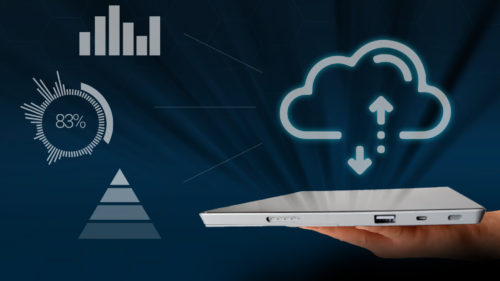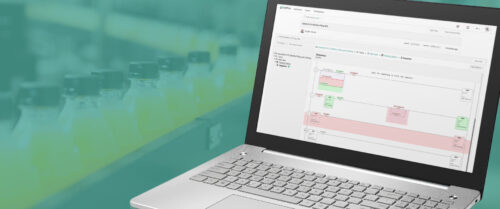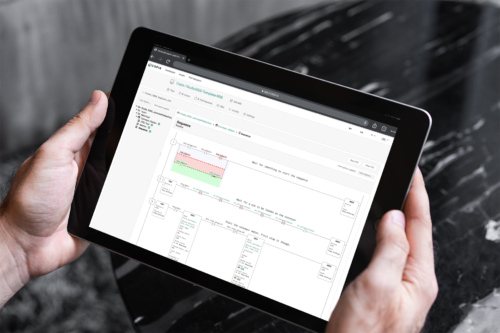Drivex creates win-win with visualization software
Leo Willis and the small three-man engineering team at Drivex Inc. are heading back to the future, where his industrial control systems business is primed for growth reminiscent of its heydays during the 1980s and 1990s. “We’ve got the perfect Petri dish for innovation and success here in Livermore, California.
Leo Willis and the small three-man engineering team at Drivex Inc. are heading back to the future, where his industrial control systems business is primed for growth reminiscent of its heydays during the 1980s and 1990s.
“We’ve got the perfect Petri dish for innovation and success here in Livermore, California. The area is rich in great educational opportunities and young engineering talent that really loves living here on the outskirts of Silicon Valley,” said Willis, who is fresh off one of the company’s biggest, most sophisticated projects.
Willis gives much of the credit for the bright outlook at Drivex toto WinCC, sophisticated graphical process visualization software from Siemens. “Drivex is reinventing itself in response to a changing landscape,” Willis said. “Smoke-stack industry has moved out and more advanced, vacuum chamber-based manufacturing is on the rise. The software is a real breakthrough, which enables us to help make a customer’s highly complex production process incredibly operator friendly.”
A project to remember
Drivex has become a behind-the-scenes star among big and brand name manufacturers of products from solar cells and duct tape to breath strips and toilet paper. The firm has done well as a systems integrator specializing in customized motion control solutions for web handling, a factory process that transforms webs or large rolls of plastics, paper, metals and other materials into products.
Drivex has played an integral role in the production of hundreds of household and commercial items. “One of the control systems we built unwinds large rolls of breath strip film in a big oven, coats it with mouth wash medication, then rolls it back up and directs a big blade to cut it into one-inch squares ready for packaging,” said Willis. “Another drives-based solution makes the production of solar cell panels more efficient than ever by running huge 800 pound rolls of stainless steel through seven different process vacuum chambers and cutting the finished solar cell material into squares ready for installation.”
The project that Willis and his associates will remember the most is the development of a replacement automation and control system that has far exceeded a leading superconductor maker’s wildest expectations, and opened the door to vast new business growth for Drivex. “Operators at the superconductor plant were finding it virtually impossible to manage and monitor their extremely complex manufacturing processes using literally hundreds of interface screens that were tough to navigate and understand,” said Eric Tischer, an engineer at Drivex.
Tischer took on what would quickly become the most challenging and rewarding assignment of his young and gifted career. “A full team of integrators from another company had originally programmed the three-year-old system, spending 18 months writing code and generating more than 1,000 screens,” Tischer said. “I had initially planned to develop the replacement system using the same software, but we realized it would take at least six months and decided the customer would be much better off if we just started from scratch.”
A picture is worth 1,000 screens
Drivex is already reaping the benefits of adding the visualization software to its long list of capabilities. “The company flew a whiz kid here for a week to bring Eric quickly up to speed and help him write much of the code that has enabled us to create a whole new level of operational simplicity and flexibility for our customers,” explained Willis. “Timing is everything. With our newfound know-how, we can take on the increasingly complex and sophisticated customer applications we could never do before.”
For Tischer, the kind of guy who tinkers in robotics and car engines for the fun of it, the light bulb went off when he realized he could cut engineering time dramatically by leveraging the total integration between programming platform and the visualization software to create libraries of reusable code. “We would probably still be working on the superconductor project if it wasn’t for the platform and software,” Tischer said. “Now we have the ability to develop macro blocks of code that can be cut, pasted and automatically integrated with the PLC. It’s the difference between programming line-by-line — like I did before — and paragraphs at a time.”
For the superconductor producer, the real proof was in the screens. The windows into their complex production process had been foggy at best for more than three years. Tischer’s primary objective centered on the customer’s need for a simplified, crystal clear view into the full plant operation and pull-down recipe menus so authorized operators could make changes on the fly.
“Their operators must be able to easily modify the sequence of precise steps taken to prepare the vacuum chambers for the production of superconductors: turning pumps on and off, setting voltages and introducing different gases and liquids based on triggers such as temperatures, pressures and time,” explained Tischer. “Normally, these steps — hundreds of them — would be hard-coded in the PLC, and we would have to fly out to make any modifications.”
With little or no training, plant operators can rearrange, modify, add or delete steps in their process sequences by accessing drop-down boxes and clicking a few check boxes. Graphical pictures that are identical to control panels in the chambers are featured on the computer screens to help operators avoid errors and confusion that could disrupt the web handler. The software has even made traditionally tedious PID controller loop programming and tuning as easy as a click or two to set or reset automated parameters.
“We’ve duplicated the real-life machine control panels on the interface screens so the operators will know instantly how to use them,” Tischer said. “In this case, a picture is worth a thousand screens. In the end, the customer went from 1,050 static, text-heavy status screens that made no sense to fewer than 25 intuitive graphical screens that keep operators tuned in to what’s happening at all times.”
Programming a win-win
Drivex customers who have made big dollar investments in state-of-the-art vacuum-chamber production facilities want as much flexibility as they can get from their web handling control. They want simple, intelligent visualization screens that turn complex applications into sophisticated models of operational excellence running on pushbutton ease and material-saving accuracy.
Both engineers are confident the heydays are making a comeback at Drivex, where the founder is considering the addition of new employees and very happy he hired Eric Tischer on the spot five years ago. “Eric cut that mammoth project down to size and now we’re able to do a better job for the customer than ever before. And who knows, with the engineering time savings, maybe we’ll even have more time to play a little golf,” said Willis with a chuckle. “The software is a real win-win for Drivex and our customers.”
John Dill, Eric Tischer and Leo Willis put the finishing touches on a control cabinet at Drivex.
| Author Information |
| Harold Muma is the U.S. product marketing manager for Human Machine Interface products at Siemens. He has more than 20 years of experience in the factory automation and general electrical control markets, and has successfully launched and managed a wide range of hardware and software products. Muma has a Bachelor of Science degree in Nuclear Engineering and Mechanical Engineering from North Carolina State University and received his MBA from Georgia State University. |
Do you have experience and expertise with the topics mentioned in this content? You should consider contributing to our CFE Media editorial team and getting the recognition you and your company deserve. Click here to start this process.





